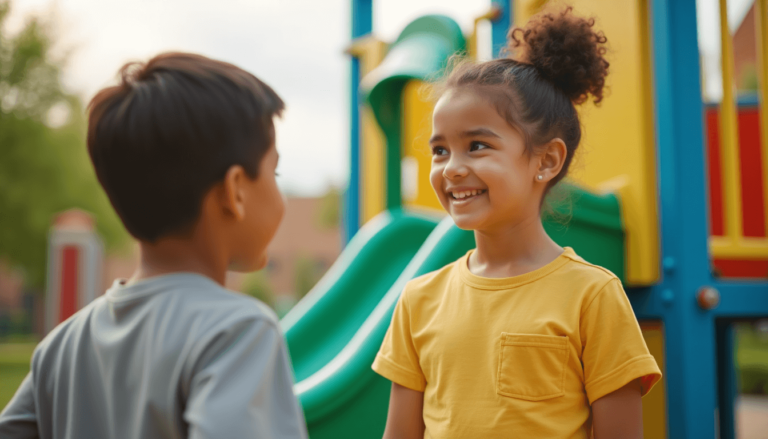Anger is natural in children, but managing it can be tough as they develop. Recognizing and addressing anger issues is crucial. At Lulabico, we specialize in managing children’s anger. Our guide offers practical strategies for parents, caregivers, and educators aligned with our mission.
Understanding Anger in Children
Anger is a common response to frustration or perceived injustice in children, ranging from tantrums to passive-aggressive behavior as they grow.
Signs of Anger Issues in Children
Recognizing signs like frequent tantrums, difficulty managing frustration, aggression, withdrawal, physical symptoms, and disruptive behavior is crucial for intervention.
- Frequent temper tantrums or outbursts
- Difficulty managing frustration or disappointment
- Aggressive behaviour towards peers, siblings, or adults
- Withdrawal or isolation
- Physical symptoms
- Disruptive behaviour
The Importance of Anger Management for Children
Teaching children to manage anger is essential for emotional development and maintaining positive relationships.
Practical Techniques for Managing Anger in Children
1. Deep Breathing Exercises:
Encourage slow, deep breaths to calm the body and mind during anger.
2. Counting to 10 Before Reacting:
Teach children to pause and reflect before reacting impulsively.
3. Taking a Break or Timeout:
Provide a designated space for children to relax and regain composure.
4. Engaging in Physical Activity or Exercise:
Encourage activities like sports or dancing to release tension.
5. Expressing Feelings Through Art or Writing:
Offer creative outlets for children to explore and process emotions.
6. Talking to a Trusted Adult or Friend:
Encourage confiding in someone for emotional support and validation.
7. Using Positive Self-Talk:
Teach children to challenge negative thoughts and replace them with positive affirmations.
8. Practicing Relaxation Techniques:
Introduce meditation or guided imagery to promote relaxation and stress reduction.
9. Redirecting Anger into a Constructive Activity:
Channel anger into productive outlets like problem-solving or creativity.
10. Learning Problem-Solving Skills:
Encourage identifying and addressing root causes of frustration to build resilience.
Conclusion
By teaching practical techniques and fostering emotional intelligence, children can navigate emotions confidently, contributing to a brighter future. Prioritizing their emotional well-being and investing in growth fosters harmonious relationships.
Understanding Anger in Children
Before delving into techniques for managing anger, it’s essential to understand the nature of anger in children. Anger is a normal response to frustration, disappointment, or perceived injustice. Children may experience anger in various situations, such as conflicts with peers, academic challenges, or changes in routine. While occasional anger is a natural part of childhood, persistent or intense anger may indicate underlying emotional or behavioral issues that require attention.
A child’s understanding and expression of anger evolve as they grow and develop. Young children often display anger through temper tantrums, crying, or physical aggression, while older children may internalize their anger or exhibit passive-aggressive behavior. Understanding the diverse ways in which children express anger is essential for effective intervention and support.
Signs of Anger Issues in Children
Recognizing the signs of anger issues in children is the first step in addressing them effectively. Some common indicators of anger problems in children include:
- Frequent temper tantrums or outbursts: Children who experience frequent and intense temper tantrums or emotional outbursts may be struggling with underlying anger issues. These outbursts may occur in response to seemingly minor frustrations or triggers.
- Difficulty managing frustration or disappointment: Children who have difficulty coping with frustration or disappointment may resort to anger as a primary means of expressing their emotions. They may struggle to regulate their responses and may become easily overwhelmed by challenging situations.
- Aggressive behavior towards peers, siblings, or adults: Aggression towards others, whether verbal, physical, or relational, is a common manifestation of unresolved anger in children. Aggressive behavior may include hitting, kicking, yelling, or name-calling, and it often stems from an inability to manage intense emotions effectively.
- Withdrawal or isolation: Some children may withdraw or isolate themselves in response to anger or frustration. They may retreat into solitude as a coping mechanism to avoid confrontations or uncomfortable social interactions. Withdrawal may indicate feelings of sadness, shame, or insecurity underlying their anger.
- Physical symptoms: Anger and stress can manifest in physical symptoms such as headaches, stomachaches, muscle tension, or rapid heartbeat. Children experiencing chronic anger may exhibit somatic complaints as a physiological response to emotional distress.
- Disruptive behavior: Anger-related issues can impact a child’s behavior at home, school, or social settings. Children may struggle academically, have difficulty forming friendships, or exhibit disruptive behaviors that interfere with daily functioning.
The Importance of Anger Management for Children
Teaching children how to manage their anger is essential for their emotional development and social functioning. Effective anger management equips children with valuable skills to express their emotions constructively, resolve conflicts peacefully, and maintain positive relationships with others. By learning to regulate their emotions, children can navigate life’s challenges with resilience and confidence.
Anger management skills are not only essential for individual well-being but also contribute to a positive and harmonious social environment. Children who learn to manage their anger effectively are better equipped to communicate assertively, empathize with others, and collaborate in group settings. By fostering healthy emotional regulation, parents, caregivers, and educators lay the foundation for a supportive and inclusive community where individuals feel valued and respected.
Practical Techniques for Managing Anger in Children
1. Deep Breathing Exercises:
Deep breathing exercises are a simple yet powerful technique for calming the body and mind during moments of anger. Encourage children to take slow, deep breaths, inhaling through their nose and exhaling through their mouth. Deep breathing promotes relaxation and helps children regain control over their emotions.
2. Counting to 10 Before Reacting:
Teaching children to count to 10 before reacting allows them to pause and reflect before responding impulsively. This brief moment of mindfulness provides children with the opportunity to assess the situation calmly and choose a more thoughtful course of action.
3. Taking a Break or Timeout:
When children feel overwhelmed by anger, encourage them to take a break or timeout to calm down. Provide a designated space where they can retreat to relax and regain composure. Taking a timeout allows children to remove themselves from the source of frustration and return to the situation with a clearer perspective.
4. Engaging in Physical Activity or Exercise:
Physical activity is an effective outlet for releasing pent-up energy and tension associated with anger. Encourage children to engage in activities they enjoy, such as playing sports, riding bikes, or dancing. Exercise not only helps children manage their emotions but also promotes overall physical and mental well-being.
5. Expressing Feelings Through Art or Writing:
Encourage children to express their feelings through creative outlets such as drawing, painting, or journaling. Artistic expression allows children to explore and process their emotions in a safe and non-threatening manner. Provide art supplies and encourage children to express themselves freely without judgment.
6. Talking to a Trusted Adult or Friend:
Encourage children to confide in a trusted adult or friend when they’re feeling angry or upset. Having someone to talk to can provide emotional support and validation, helping children feel understood and less alone in their struggles. Listen attentively to children’s concerns and offer empathy and encouragement.
7. Using Positive Self-Talk:
Teach children to challenge negative thoughts and replace them with positive affirmations. Encourage them to practice self-compassion and remind themselves of their strengths and abilities. Positive self-talk helps children cultivate a resilient mindset and fosters a sense of optimism in challenging situations.
8. Practicing Relaxation Techniques:
Introduce children to relaxation techniques such as meditation, guided imagery, or progressive muscle relaxation. These techniques promote relaxation and stress reduction by calming the nervous system and inducing a state of deep relaxation. Encourage children to practice relaxation exercises regularly to build resilience against anger and anxiety.
9. Redirecting Anger into a Constructive Activity:
Help children channel their anger into productive and constructive activities. Encourage them to engage in activities that promote self-expression, creativity, or problem-solving. Redirecting anger into constructive outlets empowers children to transform negative emotions into positive outcomes.
10. Learning Problem-Solving Skills:
Teach children effective problem-solving skills to address the underlying causes of their anger. Encourage them to identify the root causes of their frustrations and explore potential solutions. By developing problem-solving skills, children gain confidence in their ability to overcome challenges and adapt to stressful situations.
Conclusion
Managing anger is an essential life skill that children can learn and develop with guidance and support from adults. By teaching children practical techniques for managing their emotions, we empower them to navigate life’s challenges with resilience and confidence. As parents, caregivers, and educators, we play a crucial role in modeling healthy emotional expression and providing children with the tools they need to thrive emotionally and socially.
In conclusion, fostering emotional intelligence and teaching effective anger management strategies equip children with the skills they need to navigate their emotions confidently and build positive relationships throughout their lives. By promoting a supportive and inclusive environment, we empower children to express themselves authentically
and contribute positively to their communities. Let us continue to prioritize the emotional well-being of children and invest in their growth and development for a brighter and more harmonious future.




